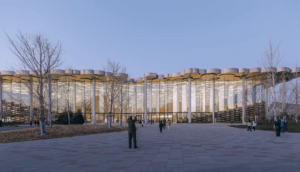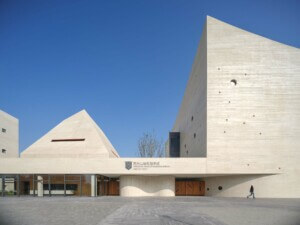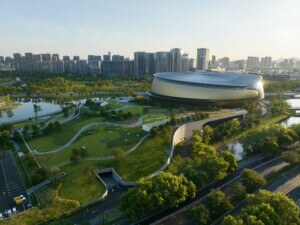For Li Hu and Huang Wenjing, practicing architecture in China is a study of locality. As the founders of OPEN Architecture, the pair have been responsible for typology-bending projects across the country, from the Ullens Center for Contemporary Art (UCCA) Dune Art Museum that’s buried into China’s Gold Coast to the expansive Garden School in Beijing’s Fangshan District. Their work is steeped in nature and simplicity, no matter whether the building sits in an urban or rural environment. Eleven years into its practice, OPEN is emerging as a global force for design that’s deeply rooted in its location. AN Interior’s executive editor Matt Shaw spoke with Hu about OPEN’s latest projects and what it looks like to work in China today.
AN Interior: I see a clear influence of Steven Holl in your early work, from the soft edges of your buildings to the way you deal with fenestration. It seems that recently some of your work has started to depart from this style, favoring the use of more organic forms.
Li Hu: I started working on projects in China in 2003 for Steven Holl’s office. I worked with him for ten years, and five of these years as a partner. I worked on several well-known American projects like the Nelson-Atkins Museum of Art in Kansas City, Missouri; the Visual Arts Building for the University of Iowa School of Art; and the Swiss Embassy in Washington, D.C.
During my time with Steven Holl, my wife and now partner, Wenjing, was an associate at Pei Cobb Freed & Partners, a much larger, more organized, traditional firm.
Steven definitely has a big influence on our work. Actually, in how we work, not necessarily on the language. I think what underlines our work, beneath the surface, is our focus on humans. So much of architecture today is about form and what the end result will look like in photos, but architecture really is about life. Steven’s biggest influence on us was his constantly driven approach to architecture, and that every project at the beginning was just a concept.
Read the full story on our interiors and design site, aninteriormag.com.











